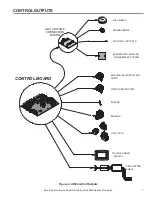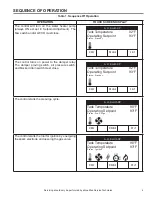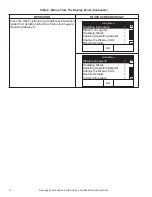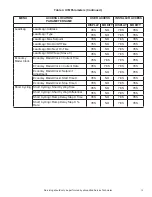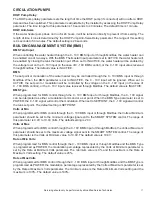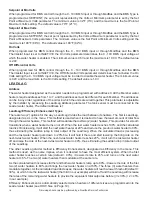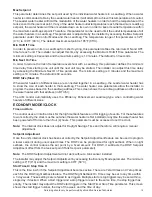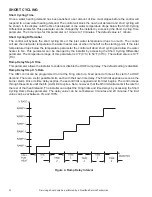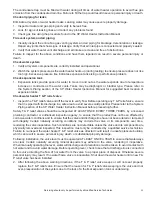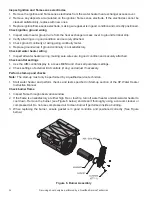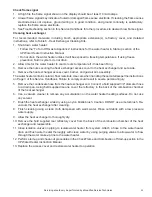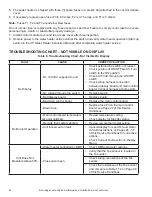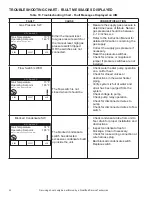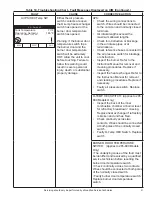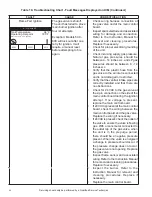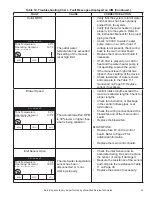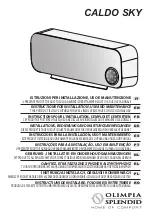
20
Servicing should only be performed by a Quali
fi
ed Service Technician
SHORT CYCLING
Short Cycling Time
Once a water heating demand has been satis
fi
ed, a set amount of time must elapse before the control will
respond to a new water heating demand. The control will block the new heat demand and short cycling will
be shown in the display until the time has elapsed or the water temperature drops below the Short-Cycling
Differential parameter. This parameter can be changed by the installer by accessing the Short Cycling Time
parameter. The time range for this parameter is 1 minute to 10 minutes. The default value is 1 minute.
Short Cycling Differential
The control will bypass the short cycling time if the inlet water temperature drops too much. The control
will use the inlet water temperature the water heater was at when it shut off as the starting point. If the inlet
temperature drops below the temperature parameter the control will abort short cycling and allow the water
heater to
fi
re. This parameter can be changed by the installer by accessing the Short Cycling Differential
parameter. The temperature range of this parameter is 0°F (0°C) to 54°F (30°C). The default value is 10°F
(6°C).
Ramp Delay Step X Time
This parameter allows the installer to enable or disable the DHW ramp delay. The default setting is disabled.
Ramp Delay Step X % Rate
The UIM control can be programmed to limit the
fi
ring rate for a
fi
xed period of time at the start of a DHW
demand. There are six (6) possible limits, each with their own time delay. The
fi
rst limit applies as soon as the
burner starts. Once its time delay expires, the second limit is applied and its timer begins. The control steps
through these limits until the 6th (sixth) limit expires. Note, however, that the 6th limit will also limit the rate for
the rest of that heat demand. The installer can adjust the
fi
ring limits and time delays by accessing the Short
Cycling Ramp Delay parameter. The delay value can be set between 0 minutes and 20 minutes. The limit
value can be set between 0% and 100%.
Figure 4. Ramp Delay Interval


